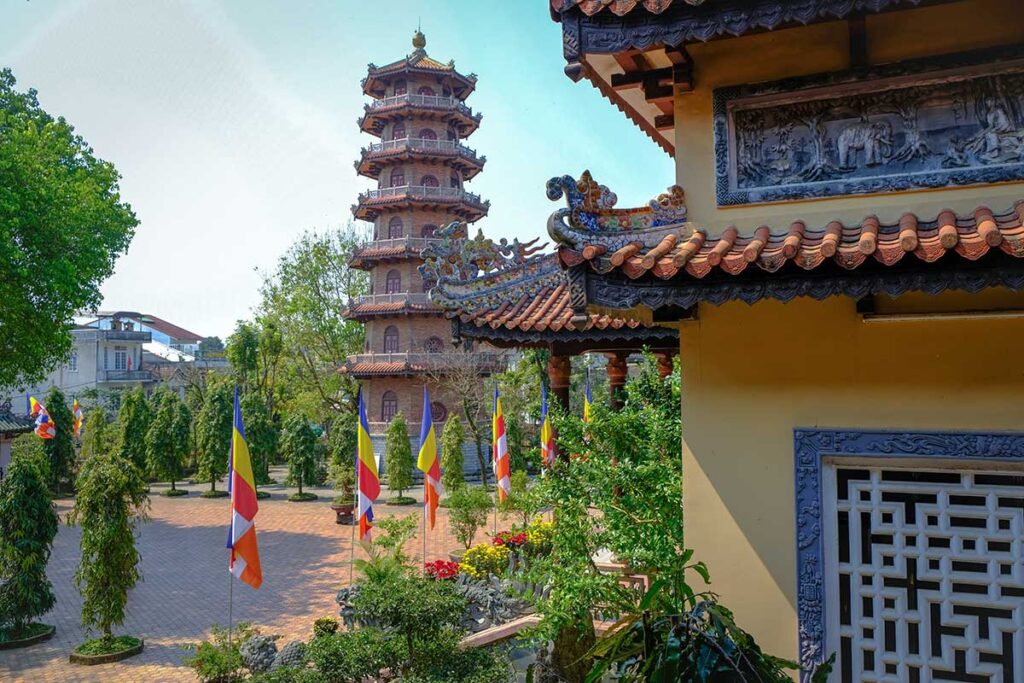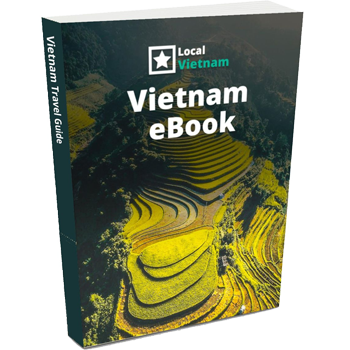History of Tu Dam Pagoda
Tu Dam Pagoda was originally founded in the 17th century by Zen Master Minh Hai, who was invited by local villagers to establish a place of Buddhist practice. Its name, “Tu Dam,” meaning “Relax the Mind,” reflects the temple’s intended purpose as a place of inner peace and reflection.

While it has been rebuilt and expanded several times over the centuries, the modern layout seen today was shaped during major renovations in the 20th century. Beyond its religious role, Tu Dam became an important site during the Buddhist revival movement of the 1960s, when it served as a center for peaceful resistance and spiritual leadership.
The temple is closely linked to the Unified Buddhist Church of Vietnam and was once home to Thich Nhat Hanh, the renowned Zen master and peace activist. Today, Tu Dam Pagoda remains an active place of worship, where monks, nuns, and laypeople continue to gather for prayer, teaching, and Buddhist ceremonies.
Highlights & architecture
Tu Dam Pagoda blends traditional Buddhist symbolism with a clean, spacious layout that feels more open and minimalist than many of Hue’s royal temples. There’s not much ornamentation here—instead, the focus is on calm, proportion, and symbolic design. The result is a temple that feels both peaceful and purposeful, offering a space for quiet reflection and daily practice.
1. Tam Quan Gate (Triple Gate)
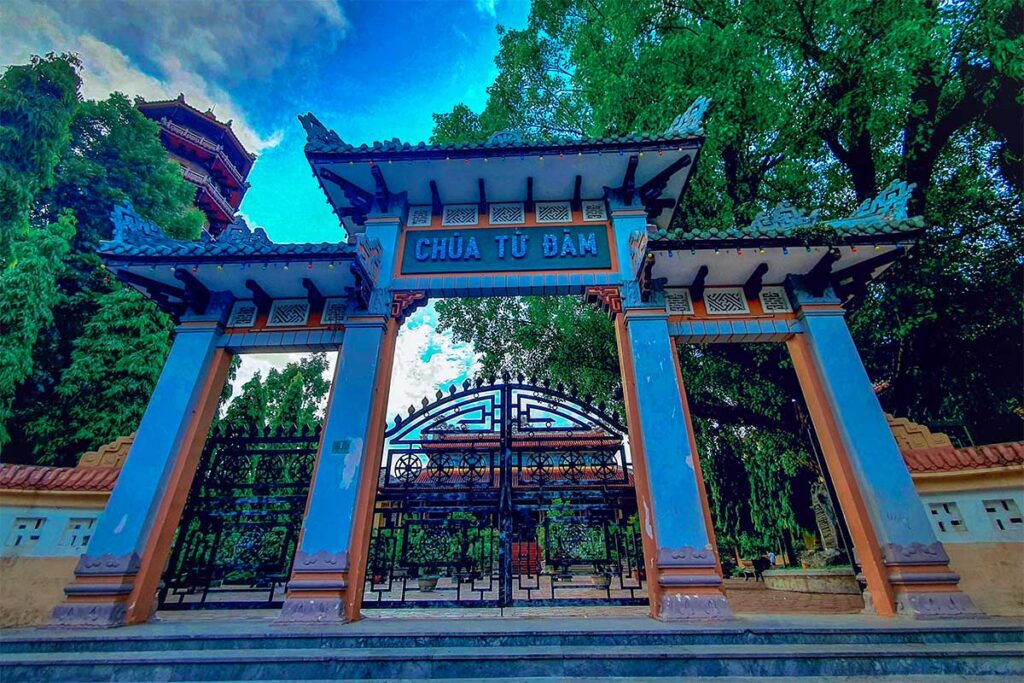
The pagoda’s main entrance is a large, three-arched gate known as the Tam Quan, a typical feature in Vietnamese Buddhist temples. The three openings symbolize the “Three Gates of Liberation” in Buddhist thought: emptiness, formlessness, and non-desire. It marks the passage from the everyday world into a spiritual space.
2. Tien Duong (Front Hall)
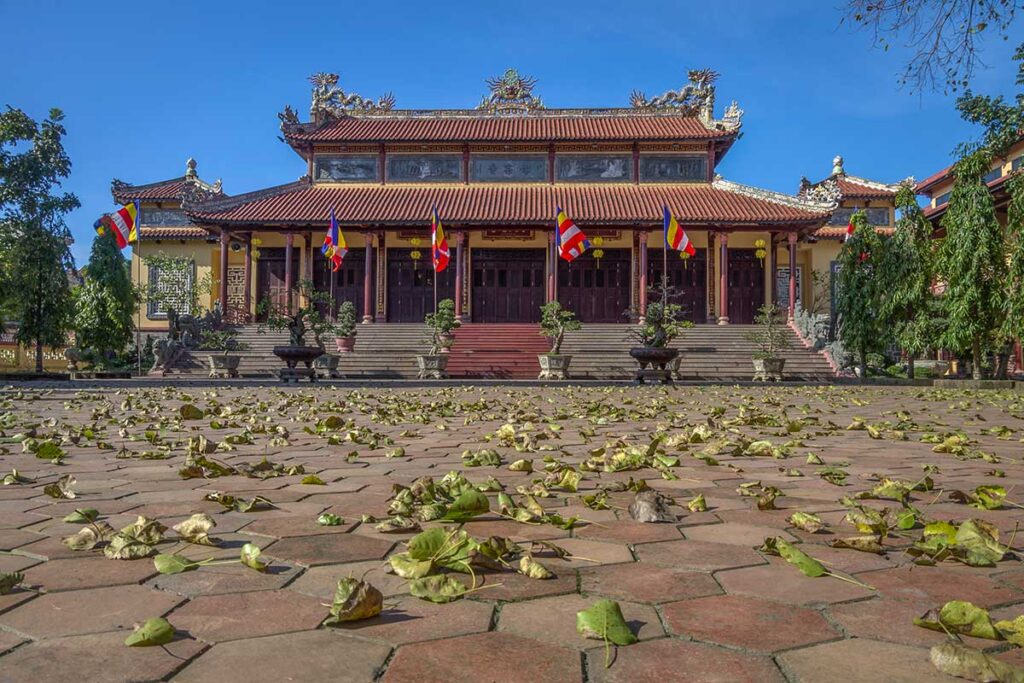

Just beyond the gate is the Front Hall, or Tien Duong, a transitional space often used for community gatherings, preparation rituals, or teaching. It’s a simple, open structure that sets the tone for the more sacred spaces deeper in the compound.
3. Bodhi tree

In the central courtyard stands a Bodhi tree grown from a cutting of the original Bodhi tree in India, where the Buddha is said to have attained enlightenment. It’s one of the most spiritually significant spots on the grounds and a symbol of mindfulness and awakening.
4. An Ton Tower
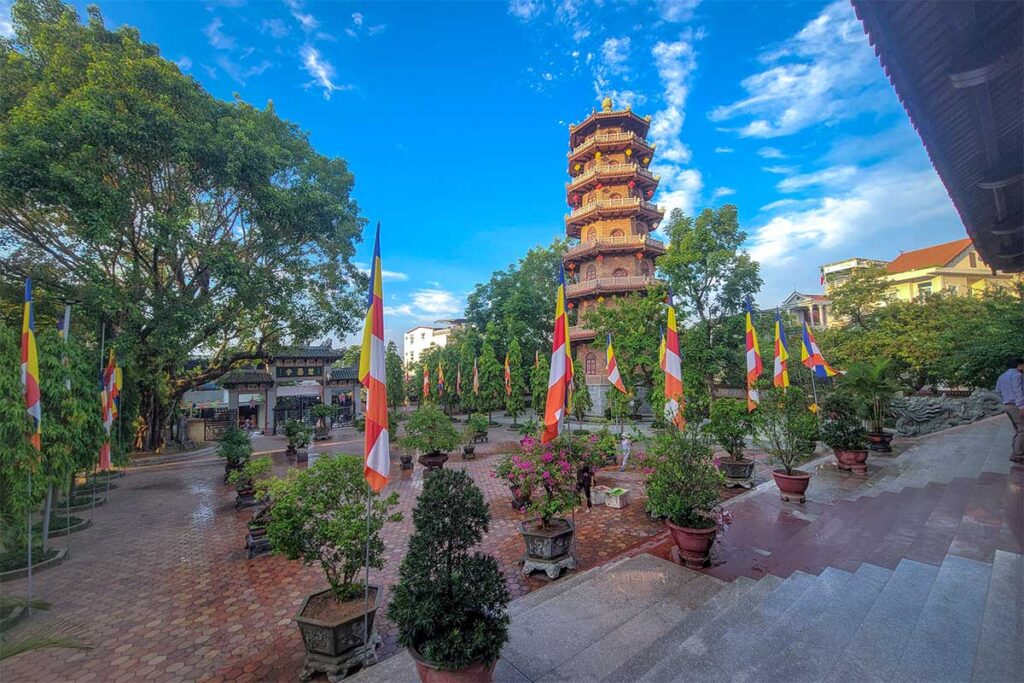
Tucked into a quieter corner is the An Ton Tower, a small stupa dedicated to Buddhist monks who have passed away. Though modest, it’s an important part of the spiritual landscape, representing the lineage and continuity of Buddhist practice at Tu Dam.
5. Exhibition room
There is a small exhibition room on the grounds, sometimes used for Buddhist art displays or historical exhibits. It’s not always open, but if it is, it can offer additional context about the pagoda’s place in Vietnamese Buddhist history.
How to get to Tu Dam Pagoda
Tu Dam Pagoda is located in southern Hue, just about 2 km from the Imperial City, in Truong An Ward. It’s close enough to include in a short sightseeing loop around the city. The full address is:
No. 1 Su Lieu Quan Street, Truong An Ward, Hue City
If you’re heading from the city center toward Hue’s imperial tombs, you’ll likely pass nearby. There’s no direct public transport to the pagoda, but it’s easy to reach by several convenient options:
Taxi or Grab
The fastest and easiest way to get there. A ride from the city center or most hotels takes around 10 minutes. Both metered taxis and Grab (app-based ride service) are widely available in Hue and reasonably priced.
By bicycle
Hue is a great city for cycling, and the flat, low-traffic roads make this a pleasant way to get to Tu Dam Pagoda. It’s a good choice if you’re exploring the city slowly or planning to visit a few other nearby sites.
By motorbike
A popular option for independent travelers. The road is easy to navigate, and parking is available near the entrance. You don’t need a permit to enter the temple area by motorbike.
(Optional) Local bus
Bus #05 reportedly passes nearby, but this isn’t a practical choice for most travelers. No English signage, irregular stops, and limited information make it more useful for locals than tourists. If you’re comfortable with local buses, it’s possible—but not recommended unless you speak Vietnamese.
Visiting information & tips
The pagoda is quiet and welcoming, but it remains an active place of worship, so a little preparation and respect go a long way toward having a meaningful visit.
Opening hours
Tu Dam Pagoda is generally open from early morning until late afternoon. There’s no entrance ticket or check-in process—visitors are free to walk in and explore respectfully during the day.
Dress code
As with most religious sites in Vietnam, modest clothing is expected. Avoid wearing shorts, sleeveless tops, or short skirts, especially if you plan to step inside the main hall. A light scarf or shawl can be useful to cover up if needed.
What to bring
- Water, especially if you’re visiting during the warmer months.
- A camera or phone for photos—just be discreet and avoid using flash or taking pictures during active worship.
- A small amount of cash if you’d like to leave a donation at the altar (totally optional but appreciated).
Nearby sights
Tu Dam Pagoda is located in the same general area as several lesser-visited but peaceful landmarks. While they’re not Hue’s headline attractions, they offer a quieter look at the city’s cultural and spiritual diversity—and they’re easy to combine in a short loop.
- Phu Cam Cathedral – A bold, modern Catholic church designed by the architect of Saigon’s Independence Palace. Just 5–10 minutes away.
- Tomb of Emperor Duc Duc – A quiet, uncrowded imperial tomb. Modest in design, but interesting for those seeking out Hue’s lesser-known royal sites.
- Nam Giao Esplanade – A historic open-air altar used for imperial offerings to Heaven and Earth. Located in a pine-shaded area, it’s atmospheric and rarely busy.
- Bao Quoc Temple – Another historic Buddhist temple dating back to the 17th century. Quieter than Tu Dam, and often overlooked by tourists.
Travel tip:
If you’re heading to the imperial tombs of Tu Duc, Khai Dinh, or Minh Mang, Tu Dam Pagoda makes for a convenient stop along the way—even though it’s not directly in the same area. It sits along the route south from Hue’s city center, so you can easily fit it into a morning or afternoon outing.
Is it worth visiting?
Tu Dam Pagoda isn’t a major tourist attraction, but it offers a calm and culturally meaningful experience for those with time to explore beyond the main sights. It’s especially worthwhile if you’re interested in Vietnamese Buddhism, or just want to step away from the crowds for a peaceful break.
If you only have a day or two in Hue, you might skip it in favor of the more iconic imperial landmarks. But if you’re traveling at a slower pace, Tu Dam is a gentle, rewarding stop—and one that locals still actively use, giving it a sense of authenticity many other places lack.
